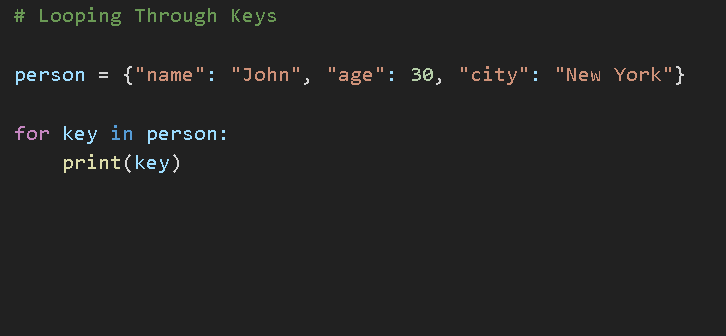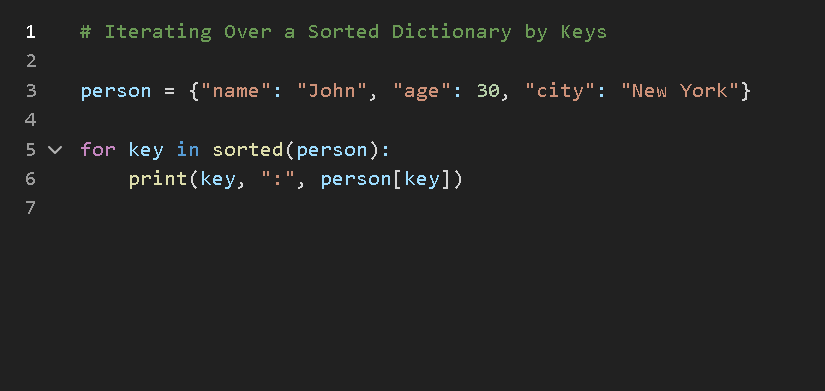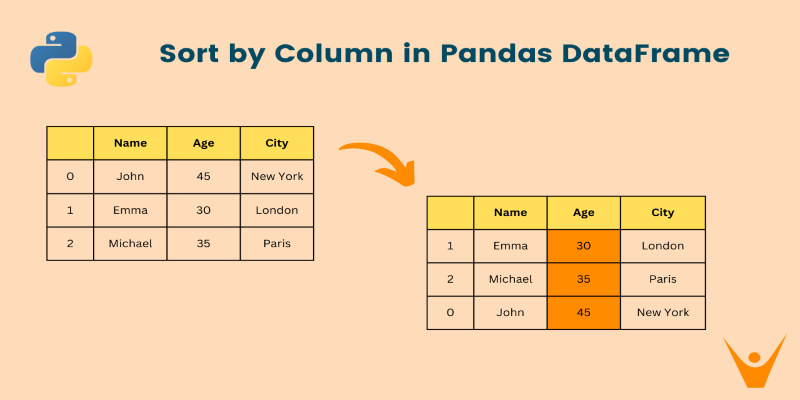Advertisement
Working with dictionaries is a regular part of writing Python code. They hold key-value pairs and give you the flexibility to store data with labels instead of relying only on indexes. But when it’s time to access or manipulate the data, you’ll need a good grip on how to loop through it properly. Python offers several clean and readable ways to iterate over dictionaries, and depending on what exactly you want to do—whether it’s accessing keys, values, or both—there’s a right method for each use case.
Let’s walk through all the ways you can iterate over a Python dictionary without repeating the logic or dragging it out longer than needed.

If you just need the keys from the dictionary, this is the simplest way to go. You can loop directly through the dictionary, and Python will give you the keys by default.
python
CopyEdit
my_dict = {'apple': 1, 'banana': 2, 'cherry': 3}
for key in my_dict:
print(key)
This is the most common pattern you’ll see. It’s short and does the job well. You can also make it a little more obvious by calling .keys():
python
CopyEdit
for key in my_dict.keys():
print(key)
There’s no difference in output, but it can sometimes help with clarity, especially when someone else is reading your code.
Sometimes you don’t care about the keys at all and just want to work with the values. That’s where .values() comes in.
python
CopyEdit
for value in my_dict.values():
print(value)
This returns just the values in the order they appear. There’s no key to go with them, so make sure you don’t need that information.
If you want both keys and values at the same time, use .items(). This is often the most useful way to work with a dictionary.
python
CopyEdit
for key, value in my_dict.items():
print(f"{key}: {value}")
This method is straightforward and keeps your code easy to read. You get full access to each pair in one go, which is handy when you need to process or compare data.
If you need the index while looping through a dictionary, combine .items() with enumerate(). This helps when the position of each item matters for what you’re doing.
python
CopyEdit
for index, (key, value) in enumerate(my_dict.items()):
print(f"{index}: {key} = {value}")
The index will count from zero, just like in a regular list loop. It doesn't change the dictionary; it just gives you an ordered way to work through it.

Dictionaries keep insertion order in Python 3.7 and above, but if you want to loop through keys in sorted order, use sorted().
python
CopyEdit
for key in sorted(my_dict):
print(f"{key}: {my_dict[key]}")
You can also sort by value:
python
CopyEdit
for key in sorted(my_dict, key=my_dict.get):
print(f"{key}: {my_dict[key]}")
This is useful when you're preparing data for display or want to apply logic based on rank.
To go through the dictionary in reverse order, use reversed() with sorted() or loop through a reversed list of items.
python
CopyEdit
for key in reversed(list(my_dict)):
print(f"{key}: {my_dict[key]}")
Or with .items():
python
CopyEdit
for key, value in reversed(list(my_dict.items())):
print(f"{key}: {value}")
This doesn’t flip the dictionary itself—it just loops backward through the pairs.
While this isn't always considered iteration in the traditional sense, it still loops behind the scenes. It's useful for transforming data or filtering a dictionary.
Example: creating a new dictionary with values doubled.
python
CopyEdit
new_dict = {key: value * 2 for key, value in my_dict.items()}
Or filtering:
python
CopyEdit
filtered_dict = {key: value for key, value in my_dict.items() if value > 1}
This keeps your code compact and clean while still performing a loop.
Dictionaries can hold other dictionaries as values. When this happens, you need a loop inside a loop.
python
CopyEdit
nested_dict = {
'fruits': {'apple': 10, 'banana': 5},
'vegetables': {'carrot': 3, 'beetroot': 7}
}
for category, items in nested_dict.items():
print(f"{category}:")
for item, quantity in items.items():
print(f" {item}: {quantity}")
This works well when dealing with structured data or configurations. Just be careful with indentation—readability becomes more important here.
This approach might look like a step back, but it's useful when you want to modify the values during the loop or need conditional logic that works better with the key-value split.
python
CopyEdit
for key in my_dict.keys():
value = my_dict[key]
print(f"{key}: {value}")
It’s slightly longer but gives you control over when and how you access values.
If you’re using a dictionary and want to apply the same logic to every pair, you can wrap the logic inside a function and call it inside the loop.
python
CopyEdit
def print_item(key, value):
print(f"{key} has value {value}")
for key, value in my_dict.items():
print_item(key, value)
This keeps your loop short and pushes the work into a reusable function, which can be helpful in larger projects.
If you want to loop through keys and values together, but prefer not to use .items(), you can combine .keys() and .values() with zip(). This gives you the same result but through a different structure.
python
CopyEdit
my_dict = {'apple': 1, 'banana': 2, 'cherry': 3}
for key, value in zip(my_dict.keys(), my_dict.values()):
print(f"{key}: {value}")
This works well and gives you the same output as .items(). It's a bit less efficient than using .items() because it creates two iterators, but it can be useful when you want to pair elements from two separate iterable views of the dictionary.
Python gives you more than one way to loop through a dictionary. Some are clean and direct, while others are better for specific situations like working with sorted data or nesting. Whether you're filtering, transforming, printing, or just accessing items, you can pick the one that matches your goal without needing to reach for anything extra. Just keep your code readable and choose the method that makes your logic clear to anyone else looking at it.
Advertisement

Discover different methods to check if an element exists in a list in Python. From simple techniques like using in to more advanced methods like binary search, explore all the ways to efficiently check membership in a Python list

Think generative AI risks are under control? Learn why security issues tied to AI models are growing fast—and why current defenses might not be enough

Learn how to use matplotlib.pyplot.subplots() in Python to build structured layouts with multiple charts. A clear guide for creating and customizing Python plots in one figure

Want to organize your pandas DataFrame without confusion? This guide shows clear, practical ways to sort by values, index, custom logic, or within groups

Explore Pega GenAI Blueprint's top features, practical uses, and benefits for smarter business automation and efficiency.

Explore how the New York Times vs OpenAI lawsuit could reshape media rights, copyright laws, and AI-generated content.

Amazon explores AI-generated imagery to create targeted, efficient ads and improve marketing results for brands.

Learn how __init__ in Python works to initialize objects during class creation. This guide explains how the Python class constructor sets instance variables, handles defaults, and simplifies object setup

Explore how Rabbit R1 enhances enterprise productivity with AI-powered features that streamline and optimize workflows.

Explore how developers utilize the OpenAI GPT Store to build, share, and showcase their powerful custom GPT-based apps.

Domino Data Lab introduces tools and practices to support safe, ethical, and efficient generative AI development.

Discover top industries for AI contact centers—healthcare, banking fraud detection, retail, and a few others.